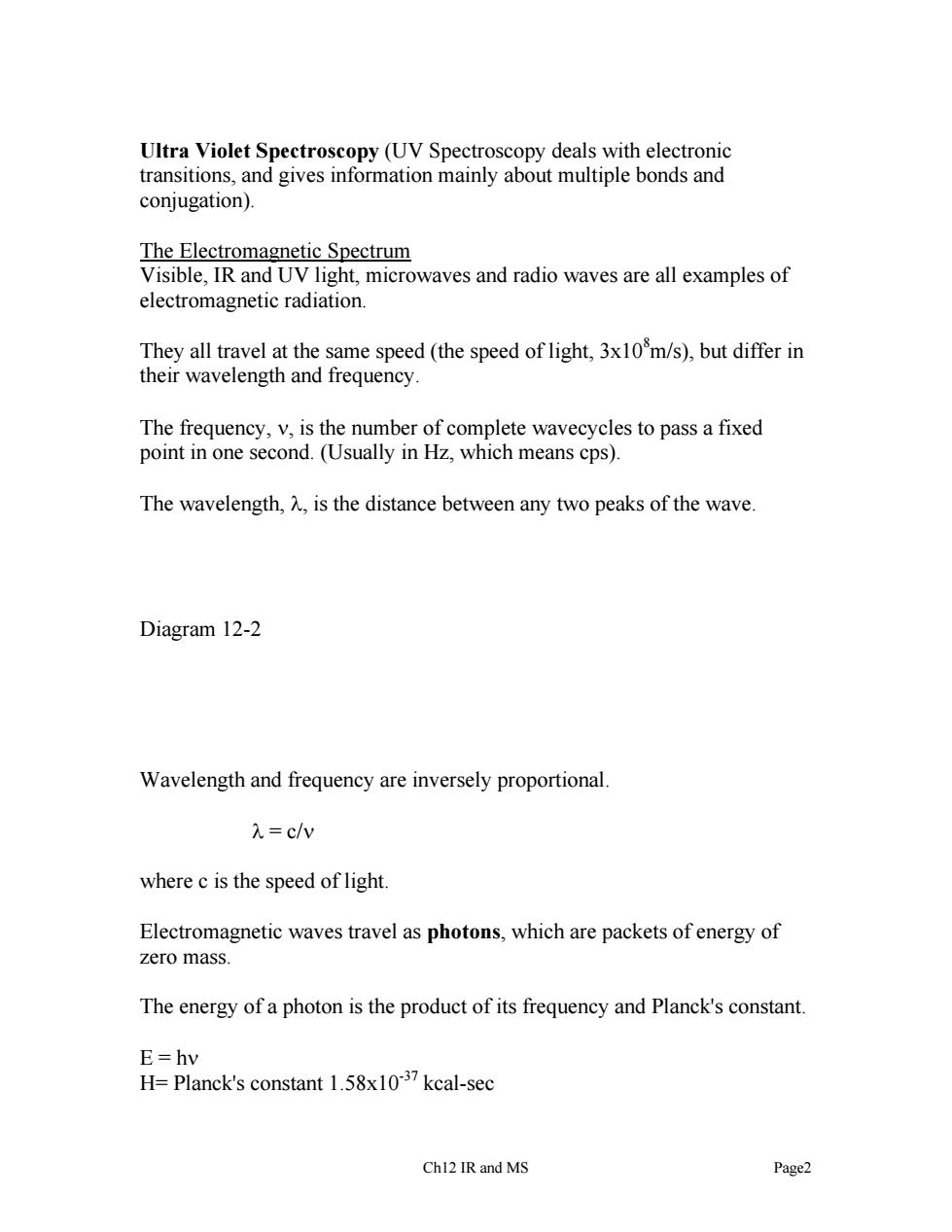正在加载图片...

Ultra Violet Speetroscopy(UV Spectroscopy deals with electronic transitions,and gives information mainly about multiple bonds and coniugation). The Electromagnetic Spectrum Visible,IR and UV light,microwaves and radio waves are all examples of electromagnetic radiation. They all travel at the same speed (the speed of light,3x10m/s),but differ in their wavelength and frequency. The frequency,v,is the number of complete wavecycles to pass a fixed point in one second.(Usually in Hz,which means cps). The wavelength,2,is the distance between any two peaks of the wave Diagram 12-2 Wavelength and frequency are inversely proportional λ=cw where c is the speed of light. Electromagnetic waves travel as photons,which are packets of energy of zero mass The energy of a photon is the product of its frequency and Planck's constant. E=hv H=Planck's constant 1.58x1037 kcal-sec Ch12 IR and MS Page2 Ultra Violet Spectroscopy (UV Spectroscopy deals with electronic transitions, and gives information mainly about multiple bonds and conjugation). The Electromagnetic Spectrum Visible, IR and UV light, microwaves and radio waves are all examples of electromagnetic radiation. They all travel at the same speed (the speed of light, 3x108 m/s), but differ in their wavelength and frequency. The frequency, ν, is the number of complete wavecycles to pass a fixed point in one second. (Usually in Hz, which means cps). The wavelength, λ, is the distance between any two peaks of the wave. Diagram 12-2 Wavelength and frequency are inversely proportional. λ = c/ν where c is the speed of light. Electromagnetic waves travel as photons, which are packets of energy of zero mass. The energy of a photon is the product of its frequency and Planck's constant. E = hν H= Planck's constant 1.58x10-37 kcal-sec Ch12 IR and MS Page2